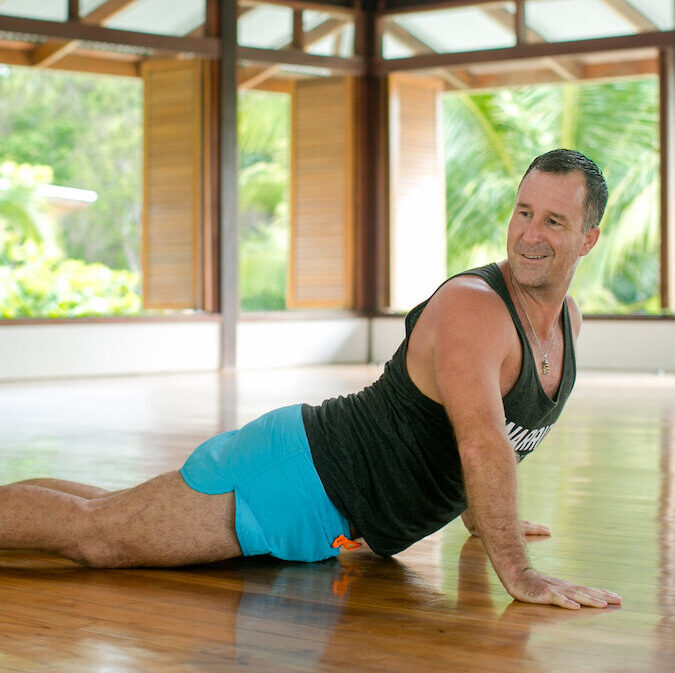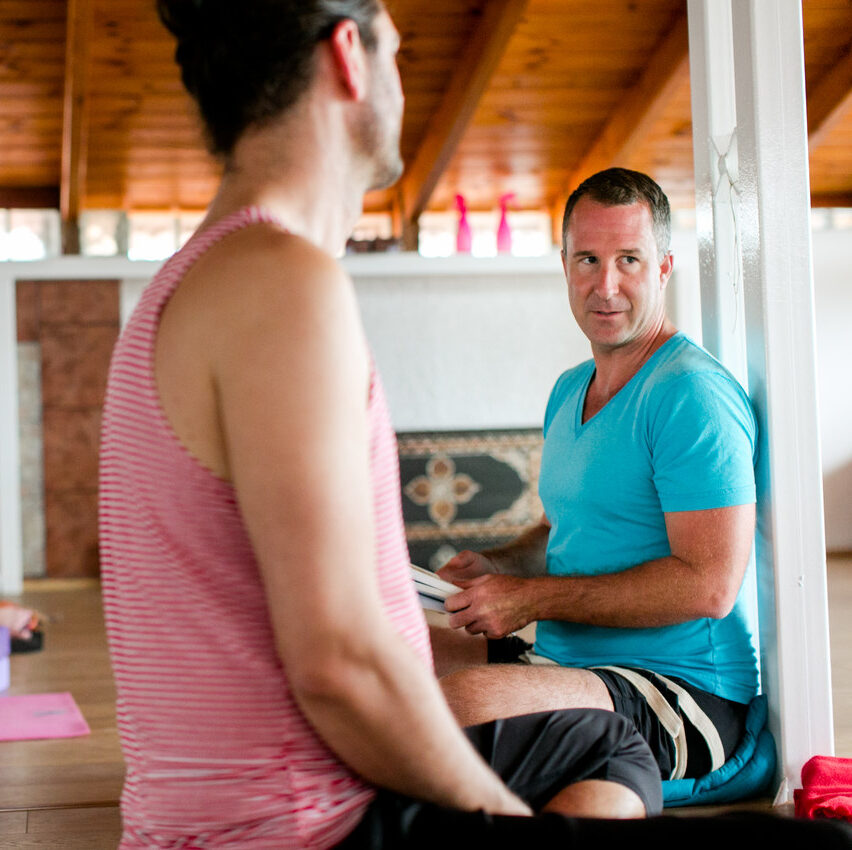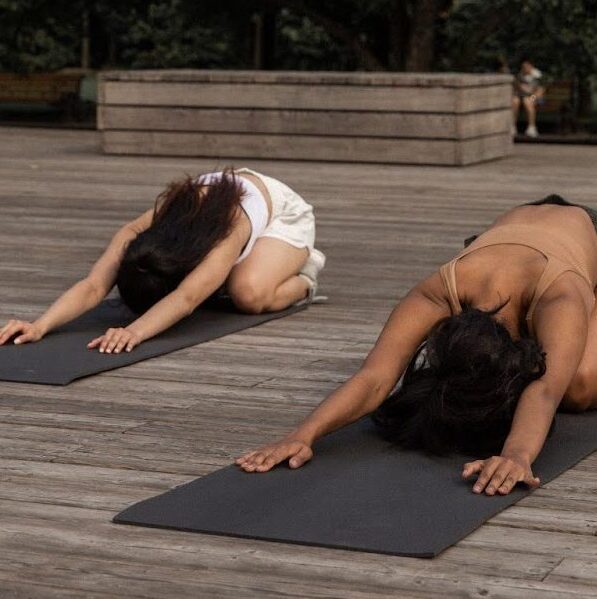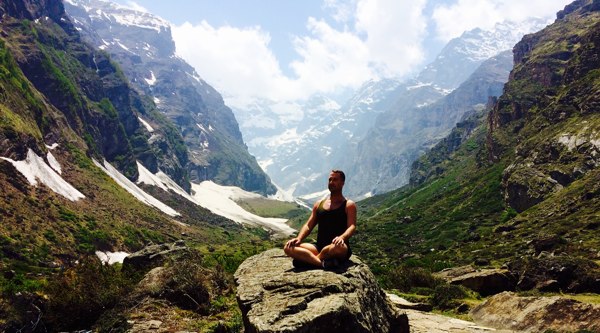It’s not hyperbole to say that embracing morning mindfulness has been a transformative experience for me — one that has helped me to live purposefully and profoundly shaped the course of my days and, in turn, my life.
In fact, a morning practice has been so important and influential for me that I attribute much of my success to this daily ritual.
Of course, when something serves me so well, I naturally feel compelled to share it with others!
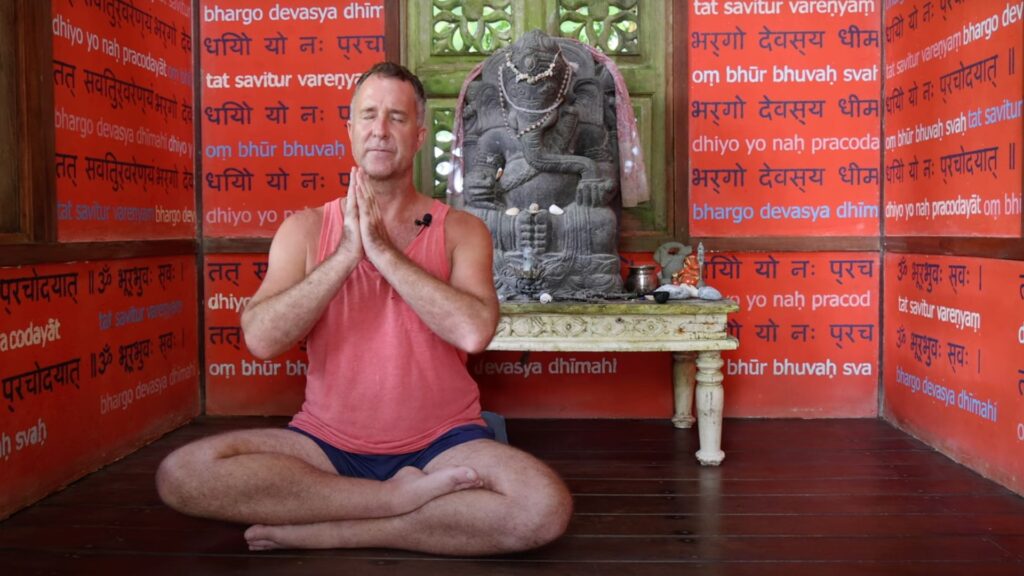
How I Discovered Morning Mindfulness
Travel back with me to 2008. I was in sun-kissed Phoenix, Arizona, and I finally had a chance to read a book that had been recommended to me years before: Kundalini Tantra by the Bihar School.
Within a mere span of two days, I devoured the book, captivated by its compelling ideas and masterful presentation. The impact was immediate, and I swiftly embraced the book’s teachings and initiated a regimen of morning rituals.
Since then, I have gone on to create Applied Yoga Anatomy + Muscle Activation™, host a popular yoga podcast, author two best-selling books, and co-own Blue Osa Yoga Retreat.
I don’t say all this to brag, but rather to tell you this…
My morning mindfulness practice directly contributed to these milestone achievements!
Now the first thing that yoga teacher trainees begin with in my yoga trainings at Blue Osa is a deep respect for morning rituals.
It does not make sense for a yogi to wake up and take on the science of yoga with their mind in a million different places.
The morning is sacred and a very opportune time to practice. It is a time to begin the day’s movement and set an intention to guide your experience.
Plus, all it takes is a few minutes each morning!
Let’s take a closer look at how cultivating a morning practice works. Then, I’ll share some of my favorite exercises for more morning mindfulness — simple techniques you can practice in less than five minutes a day!
Get access my morning routine online course here.

How cultivating a morning practice works
Morning mindfulness operates by tapping into the essence of Patanjali’s teachings in the Yoga Sutras.
In these ancient texts, Patanjali emphasizes the importance of fully embracing the present moment as the foundation of yoga practice.
Through our ‘Self,’ we can genuinely experience the profound peace and serenity that arises from being fully present.
To facilitate this process, we cultivate discipline for both the mind and the senses, creating an environment where the ‘Self’ can effortlessly immerse itself in the present moment.
Morning mindfulness serves as a powerful vehicle for training the mind, honing our focus, and allowing the ‘Self’ to enter a state of presence effortlessly.
From a scientific perspective, morning mindfulness practice has been found to impact our neurological and physiological states.
Research suggests that engaging in mindfulness techniques in the morning can positively influence brain activity, promoting cognitive clarity, emotional regulation, and overall well-being throughout the day.
Furthermore, studies have shown that consistent morning mindfulness practice can lead to long-term changes in the brain’s structure and function, fostering resilience and enhancing our capacity to navigate daily challenges with greater ease.
Pretty amazing, wouldn’t you say?
Start a morning practice with these morning mindfulness techniques
Ready to experience the transformative power of a meditation morning? Here are some of my favorite mindfulness exercises that I practice daily:
1. Trataka
One of my favorite morning rituals is Trataka which refers to concentrated gazing.
In the twilight hours of darkness, I light candles and place them in the center of small group circles before the sun rises.
Everyone practices focusing on the flame and absorbing themselves within that focus. The more motionless the flame is, the better the experience will be.
Looking around the room, I often notice first-time fire gazers breaking their concentration due to fidgeting. I have to remind them to find a very comfortable seated position so that their full attention can focus solely on the flame connected to the Ajna chakra.
After several minutes, aspirants then close their eyes and visualize the flame. Sometimes they will see it immediately; sometimes, it takes several days of practice.
The first time I did it, I was amazed that I could re-create the same flame in the center of my head, and I even thought I was crazy when it first happened!
The flame is a powerful reminder of the great force that is fire. It lights our sky, helps us to digest our food, cook with fire, and see at night.
The flame has a magical place in the minds and hearts of humanity. By meditating on this energy, we cultivate respect and admiration for it within ourselves. It’s like a morning gratitude meditation!
The benefits of Trataka for morning mindfulness:
- Improved focus and concentration
- Heightened self-awareness
- Enhanced visualization abilities
- Reduced stress and anxiety
- Deeper sense of inner calm and clarity
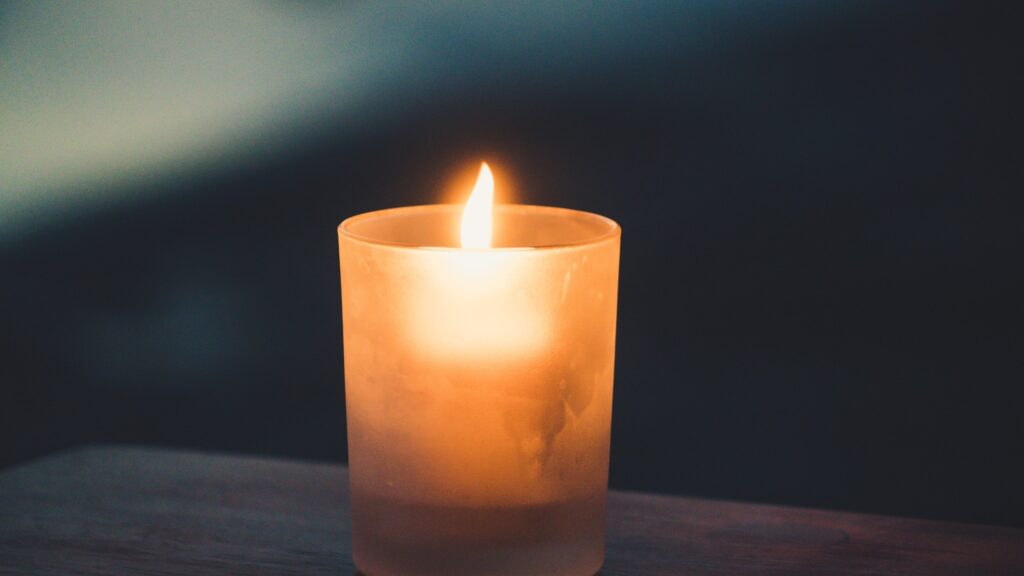
2. Cleansing Breath
After Trataka, we do kapalbhati, or “breath of fire,” a powerful body cleansing practice that releases excess air from the lungs, which wakes up the body and the mind.
My students often say they feel like they are glowing while practicing it!
Essentially, this breath involves taking a deep inhale through both nostrils and then exhaling forcefully through both nostrils, causing the stomach to retract.
There are many therapeutic values for including this meditation to start the day, a few of which include:
- Boosted digestion and improved gastrointestinal function
- Strengthened abdominal muscles and toned core
- Balancing and invigorating the nervous system
- Stimulated metabolism and improved energy levels
- Reduced stress and anxiety, promoting mental clarity and focus
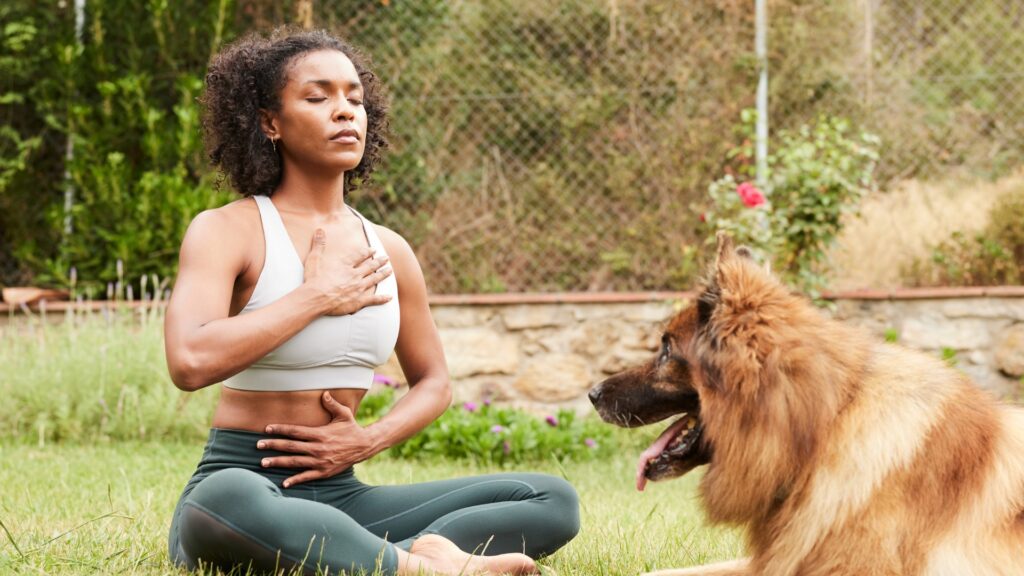
3. 61 Point relaxation
The next morning ritual on our morning mindfulness list is a passive exercise. It is an opportunity to focus the flame on 61 points of the body.
The trainees lay down, relax, and close their eyes, and I guide them on a journey experiencing the flame healing and warming of these 61 points of their bodies.
Most first-timers tend to fall asleep during this exercise. However, they still benefit from learning how to quiet the mind. This is a deep relaxation exercise and very powerful.
- Deep relaxation and stress reduction throughout the body
- Enhanced body awareness and connection with sensations
- Improved circulation and blood flow
- Reduced muscle tension and release of physical discomfort
- Calming the nervous system and promoting a sense of tranquility
- Mental clarity and improved focus
- Facilitates the release of emotional and mental stress
- Promotes better sleep and restorative rest
- Cultivates a sense of inner peace and overall well-being.
Want to try this practice for yourself? Follow this FREE video tutorial, part of our premium Morning Rituals online course!
Watch My 61-Point Relaxation Tutorial
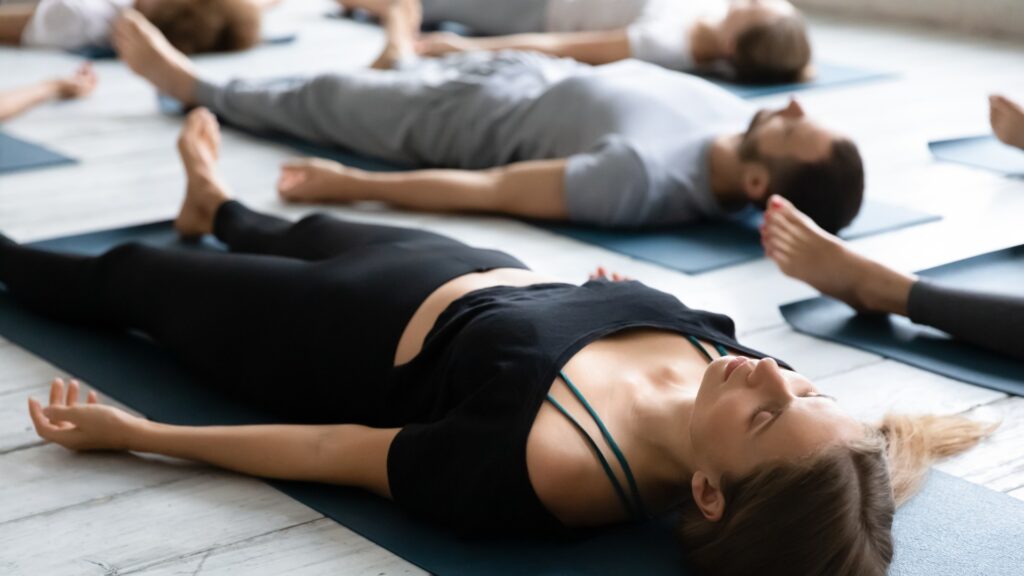
4. Pranayama
The following exercise for morning mindfulness is Pranayama, and we begin by bringing the length of inhalation and exhalation to match at a ratio of 1:1. This means if the inhalation is 4 seconds, the exhalation is 4 seconds.
We practice this breathwork with our eyes closed.
After several minutes, we practice this same breathwork but with the traditional alternate nostril Nadi Shodhan Pranayama.
This activity is excellent for opening the sinus and waking the two channels of the body, Ida and Pingala. Modern medical circles say that the Pingala is likened to the active, physical body, while the Ida is the passive, emotional body.
When these two channels are focused upon, another channel opens. You can think of this third channel like a spiritual channel. Aspirants always notice the effects of this practice within 30 days.
Try a 5 minute morning meditation that focuses on this pranayama work and watch what happens!
Some benefits of Pranayama include:
- Stress reduction and relaxation
- Emotional balance and stability
- Improved focus and mental clarity
- Enhanced respiratory function
- Better sleep quality
- Mind-body connection and present moment awareness
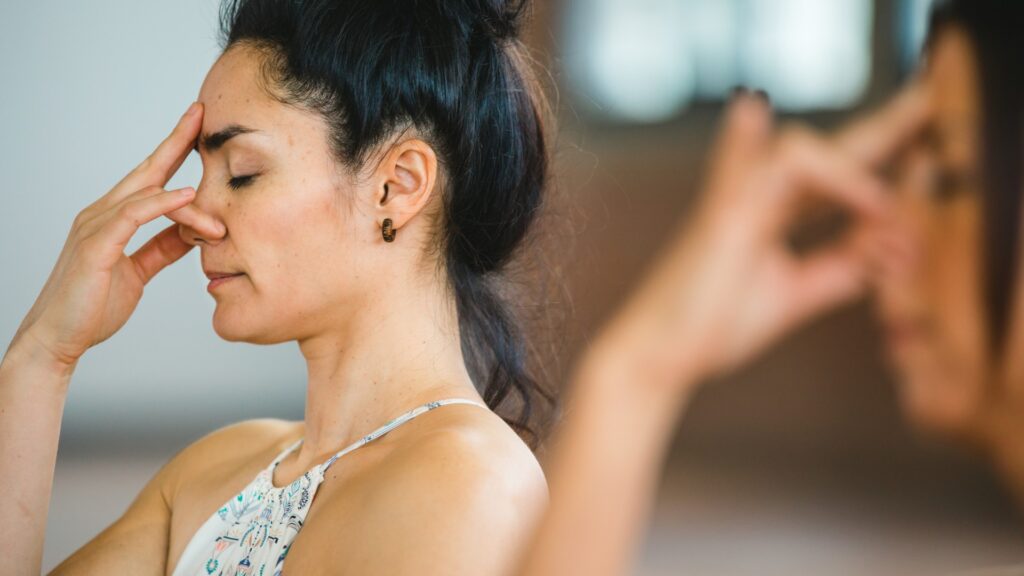
5. Sensory withdrawal
“The tortoise can draw in its legs, the seers can draw in their senses. I call them illumined.” -The Bhagavad Gita
It is not often that we explore our senses with such deepness.
When we listen to only sounds and remove the influence of the other senses, our sense of hearing shows us things we never paid attention to before.
In the Blue Osa Yoga Teacher Trainings, the sound of the ocean becomes like a morning guided meditation, and the sounds of the jungle are intoxicating to a rising mind. Similarly, centering on the sense of touch, we embrace the wealth of our bodies.
In other words, sensory withdrawal during morning mindfulness can help you to:
- Heighten inner awareness: By withdrawing attention from external sensory stimuli, one can cultivate a deeper sense of self-awareness and introspection.
- Enhance concentration: Sensory withdrawal helps redirect attention inward, improving concentration and focus on specific tasks or practices.
- Reduce stress: By limiting exposure to external sensory inputs, sensory withdrawal can create a calming effect on the nervous system, promoting relaxation and reducing stress.
- Expand consciousness: Sensory withdrawal can facilitate a shift in consciousness, providing a pathway to explore deeper states of meditation and spiritual experiences.
- Improve self-control: By consciously withdrawing from sensory distractions, one develops greater self-control and the ability to respond rather than react to external stimuli.
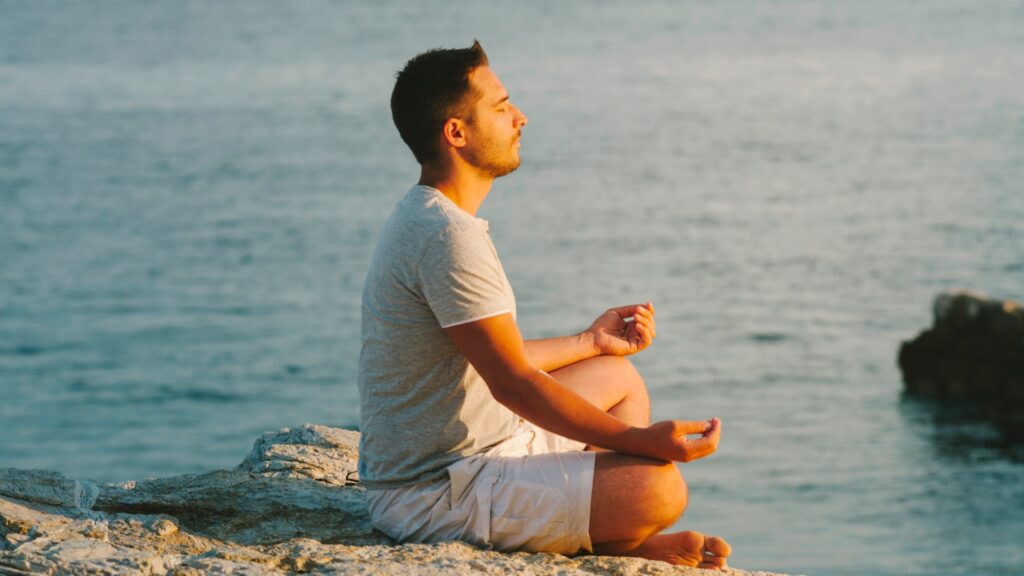
6. Morning silence
When I was an overconfident and pompous young yogi, after my morning rituals, I would find myself charged up and full of energy, and that energy would go into talking my head off to anyone around or on the phone.
It was not until I discovered the art of silence that I added calm to my morning rituals.
My Blue Osa Yoga Teacher Trainings are especially beautiful because our morning silence continues until breakfast, and students begin to taste their food more sensually. The sounds of the morning and the feeling of waking up with nature is intense and reminds everyone of their connection to nature.
This is often lost when we live in cities and wake up to many responsibilities. On the stunning Osa Peninsula in Costa Rica, this connection renews health and love in everyone who experiences it.
Incorporate morning silence into your morning mindfulness and you will:
- Create inner calm and tranquility
- Enhance clarity and focus
- Reduce stress
- Increase self-awareness
- Improve your mood and emotional well-being
- Cultivate more mindfulness and presence
- Create opportunity for introspection and self-reflection
- Heighten your creativity and inspiration
- Set a positive tone for the rest of the day
Access my morning routine online course!

Do your mornings right with a consistent morning practice
Every single day starts with a morning. Everyone has some sort of morning, even if they wake up at 5 am.
If we start our mornings by improving how we perceive ourselves and the world, we open the possibilities to live rich and healthy lives.
Now, I know that some of you are ready for game-changing shifts in your life — to feel stronger, joy-filled, and firmly in line with your soul’s calling.
For over 30 years, I’ve helped people from around the globe eliminate their pain so they can step into their greatest potential and live their life purposefully. I’d love to support you, too.
If my teachings resonate with you, learn more about how you can work with me here.

